This article first appeared at the Healthy City Local.
Recently I was in Bellingham, Washington, for a family event. In many ways, both historical and present-day, Bellingham is a lot like Santa Monica. Both cities were situated where railroads reached the sea – in Bellingham’s case, Puget Sound. Both grew primarily as industrial cities. Today both cities have populations of about 90,000.
My wife and I stayed at a hotel in the Fairhaven district. Originally Fairhaven was a separate town, before merging with a town then called Whatcom to form Bellingham. Like Santa Monica’s Ocean Park neighborhood, it had its own business district separated by railroad tracks from the water. Like Ocean Park today it still has its own little downtown. (Unlike in Ocean Park where the railroad is long gone, the track that runs between Fairhaven and the water is still active. The hotel gives its guests earplugs and offers white noise machines.)
For the first two thirds of the 20th century, Fairhaven and the Bellingham area in general were industrial, much like Santa Monica was. Along with other industries, Puget Sound was the center of the largest salmon canning industry in the world.
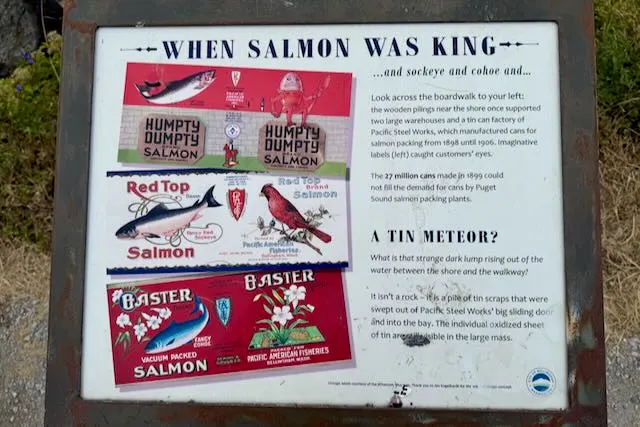
The canned salmon industry closed in the 60s, leaving abandoned industrial sites along the Fairhaven waterfront. Again, there is a parallel to Santa Monica: Douglas Aircraft, which had been Santa Monica’s biggest industry, closed its Santa Monica plant around the same time.
During the decades when the salmon canning industry was active, Fairhaven hosted a plant on the shoreline where the cans themselves were manufactured. Now a park, called Boulevard Park, has replaced the can factory.
The park has quite a few markers detailing this history; here are some, including about the can factory:
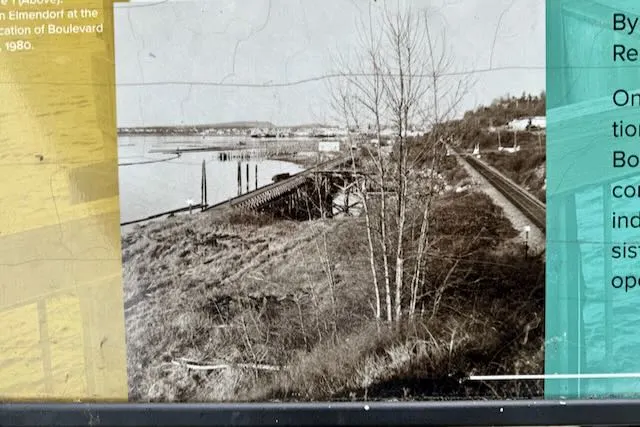
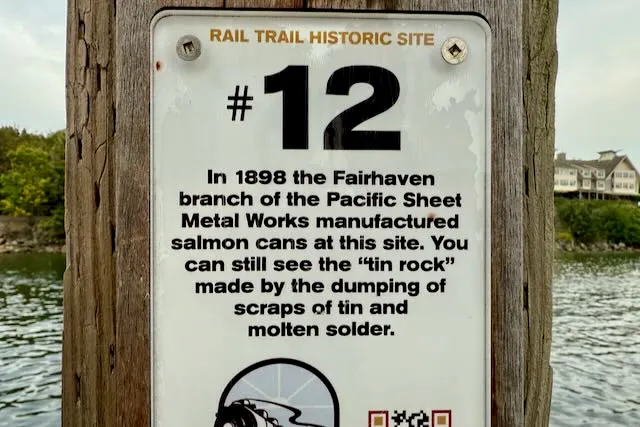
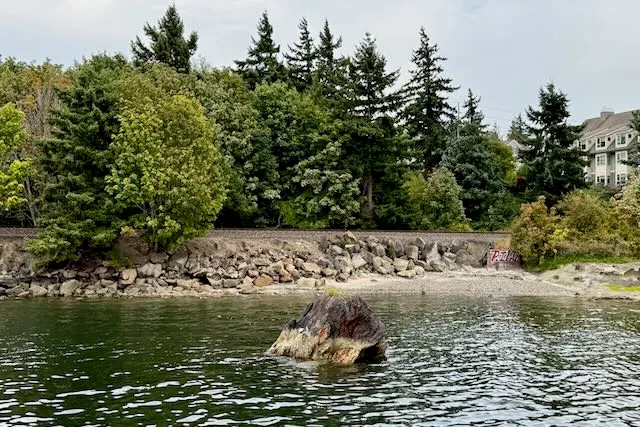
Boulevard Park includes a pathway that runs out on trestles (this part is called Taylor Avenue Dock), which joins a trail on the land (and another park) to connect to downtown Bellingham, about two miles north. One day I walked the trail up to Bellingham. The parks and the trails are a great example of turning an industrial site into a park.

Naturally, I couldn’t help but think of our project here in Santa Monica to turn an industrial site, Santa Monica Airport, into (or back into) a park. What I learned, from signage in the park, was that it took decades of tenacious effort to do the job, and that the community of Bellingham is immensely proud of that effort.
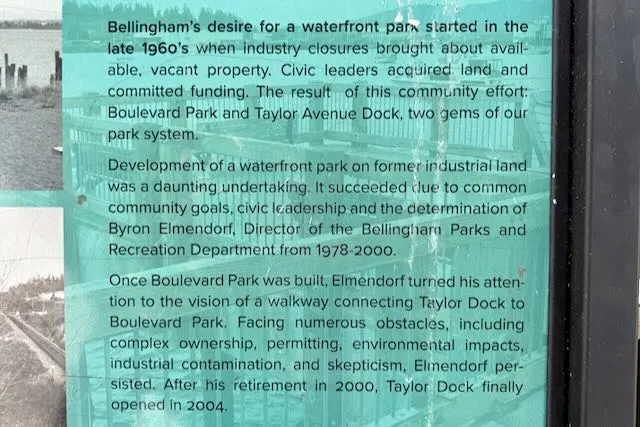
Yes, as the marker said, it was a community effort. Also, note that it took about 50 years to complete the job — a waterside park was aspirational in the 60s, became a partial reality by 1980, and was completed only in 2004.
This timeframe is something to keep in mind as we grapple with reversing almost a century of industrial use at the airport. I’ll quote this language from the marker: “Facing numerous obstacles, including complex ownership, permitting, environmental impacts, industrial contamination, and skepticism, [Parks Director Byron] Elmendorf persisted.” (Italics added – what we most have to fear here in Santa Monica about building a great park at the airport is not any real problem in the long term, but rather skepticism all by itself. Yes, “we have nothing to fear but …”)
Specifically, Bellingham is proud of the longtime head of the city’s parks department, one Byron Elmendorf, who shepherded the project through to completion. Here’s a plaque that honors him.
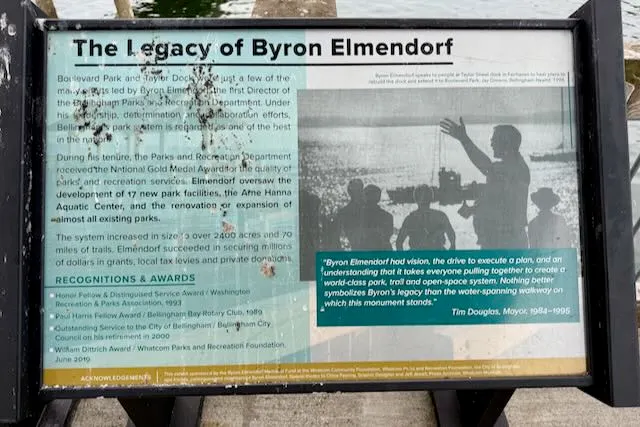
Here is a more readable photo of the legend on the marker:

I like this sentence, too: “Elmendorf succeeded in securing millions of dollars in grants, local tax levies, and private donations.” But doing so took time. As I wrote in a previous post, there will be many opportunities for funding the park over time. Santa Monica has one great advantage over Bellingham in that Santa Monica already owns the most expensive element of the airport great park, namely the land.
Bellingham has honored the legacy of Mr. Elmendorf with a special marker. Good for Bellingham to honor a civil servant! But I would say, and I suspect that Mr. Elmendorf would agree, that these beautiful and well-used parks are the legacy of the whole community, just as a great park to replace the airport can be the legacy of all of us.
Thanks for reading.
Ed. note: The original version of this article stated that Ocean Park had been a separate town from Santa Monica. From local historian Nina Fresco I’ve learned that what’s now the Ocean Park neighborhood was always within the borders of Santa Monica. The confusion arises because Abbott Kinney’s first name for what became the city of Venice was also Ocean Park. I’ve made a correction; thanks, Nina.
